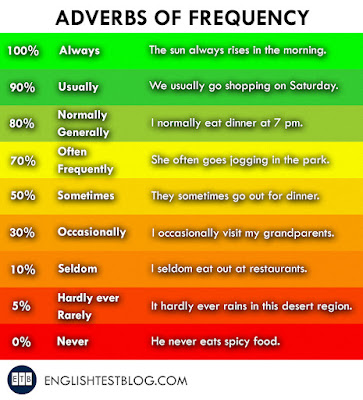Adverbs of Frequency
Adverbs play a crucial role in every language, including English. They modify verbs, adjectives, or other adverbs. Just like other parts of speech, adverbs have different types, each serving a specific purpose. In this lesson, we will focus on the adverbs of frequency.
What are the adverbs of frequency?
Adverbs of frequency help us express the frequency or regularity of actions. They give us information about how something happens.
Here are some common adverbs of frequency:
👉Click here for the pronunciation of the wordsFrequency (approximate percentage):
We can associate certain percentages to describe how often an action happens in various situations. While these percentages are not mathematically precise, they provide a general understanding of the frequency scale.
The position of the adverb in a sentence:
The position of adverbs of frequency can vary depending on the sentence structure and the specific adverb used. However, these are the general guidelines for their placement in a sentence:
1. Before the main verb:
We usually put the adverbs of frequency before the main verb. For example:
- I always go to the gym.
- She rarely eats fast food.
2. After the verb "to be":
Adverbs of frequency usually come after the verb "to be" in a sentence. For example:
- He is usually late for the meeting.
- They were never interested in sports.
3. At the beginning or end of a sentence:
We can also put them at the beginning or end of a sentence for emphasis or to provide additional information. For example:
- Sometimes, I forget my keys.
- Do you go to bed late often?

Comments
Post a Comment